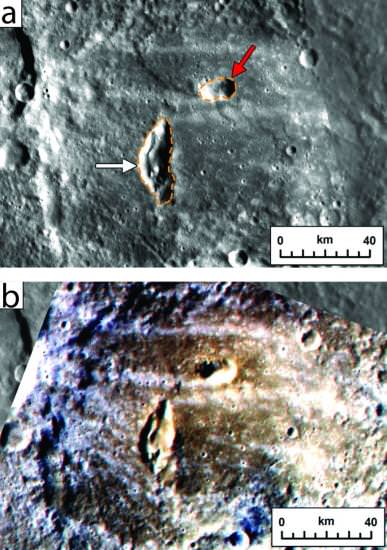Mercury — a planet once thought to have no volcanism at all — likely had a very active past, a new analysis of images from NASA’s MESSENGER spacecraft shows. After looking at 51 vents across Mercury, the team concluded that they show different amounts of erosion — hinting that the explosions happened at different times in the planet’s history.
“If [the explosions] happened over a brief period and then stopped, you’d expect all the vents to be degraded by approximately the same amount,” stated Goudge, a graduate geology student at Brown University who led the research.
“We don’t see that; we see different degradation states. So the eruptions appear to have been taking place over an appreciable period of Mercury’s history.”
Information came from orbital data collected from MESSENGER (MErcury Surface, Space ENvironment, GEochemistry and Ranging) since 2011, which provided more consistent data than the previous flybys, the researchers added. To better figure out the age of these vents, they examined those that are located in impact craters; any vents there before the impact occurred would have been wiped out.

The vents show up along with deposits of pyroclastic ash, which are leftovers of volcanic explosions. This shows that like Earth, the interior of Mercury has volatiles or compounds that have low boiling points. (Earth examples of these are water and carbon dioxide.)
By looking at the pattern of erosion in the craters, Goudge found that there are pyroclastic deposits in craters that are between 1 and 3.5 billion years old. By comparison, Mercury and the rest of the solar system formed about 4.5 billion years ago, and the finding shows the pyroclastic activity happened well after then.
“These ages tell us that Mercury didn’t degas all of its volatiles very early,” Goudge added. “It kept some of its volatiles around to more recent geological times.”
You can read more about the study in the Journal of Geophysical Research.
Source: Brown University

